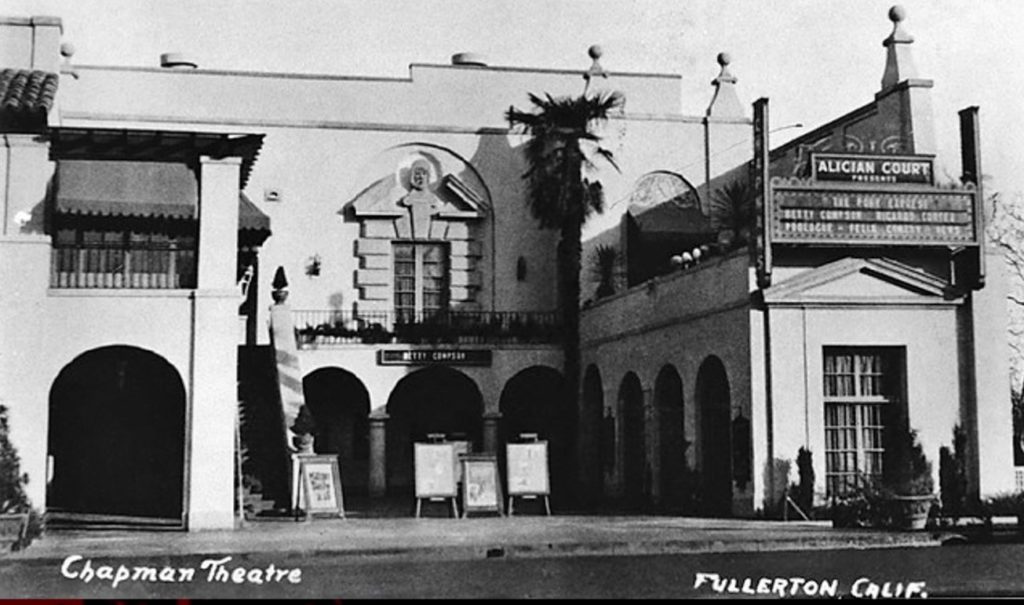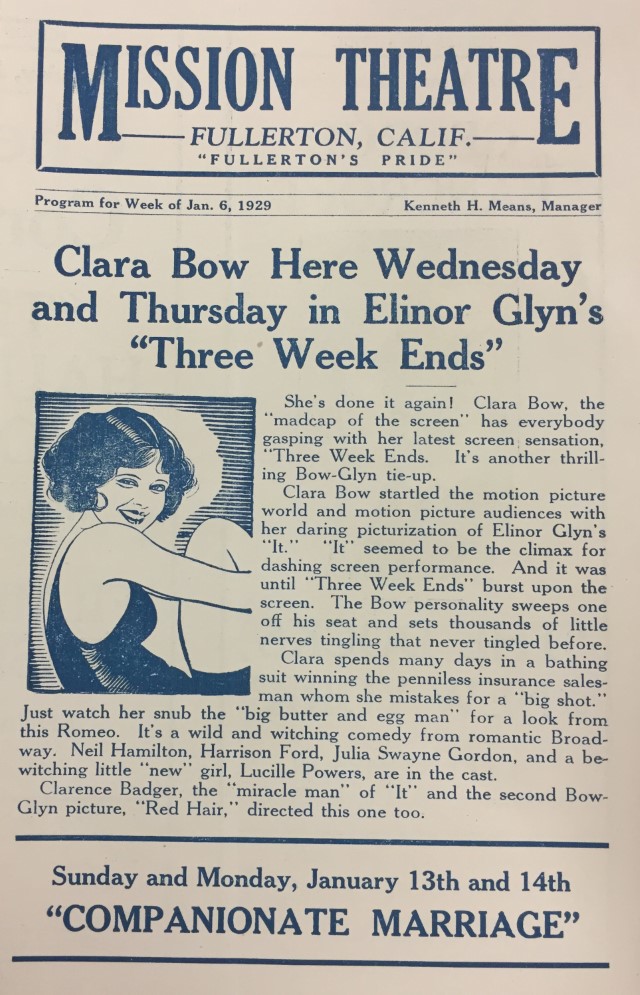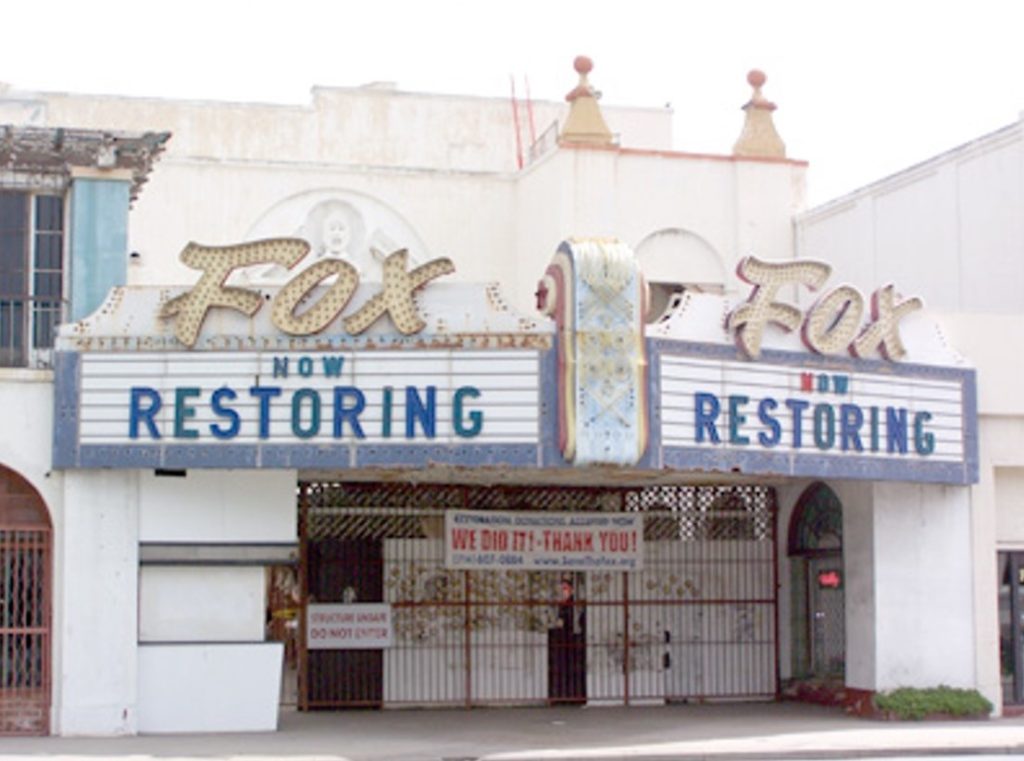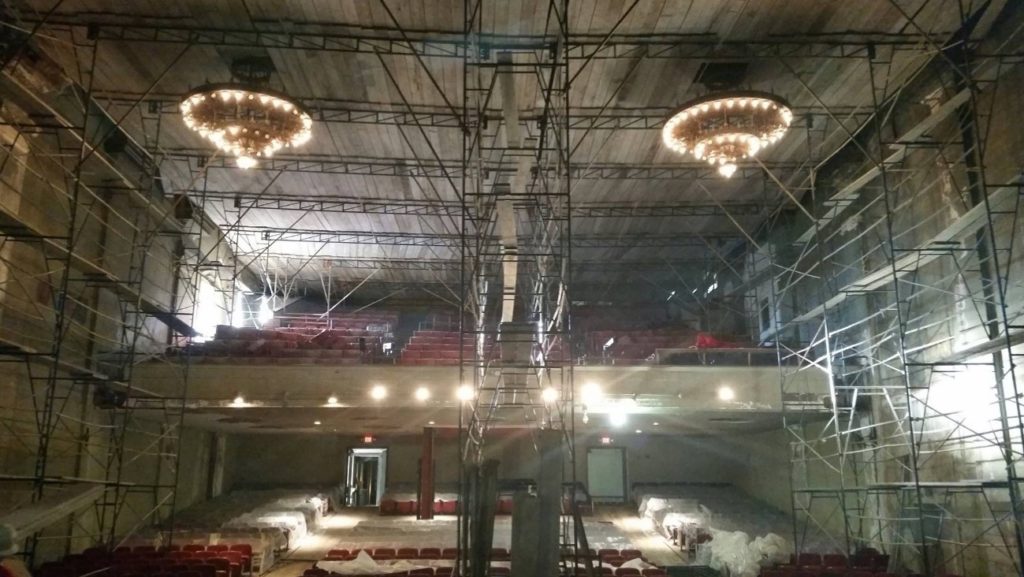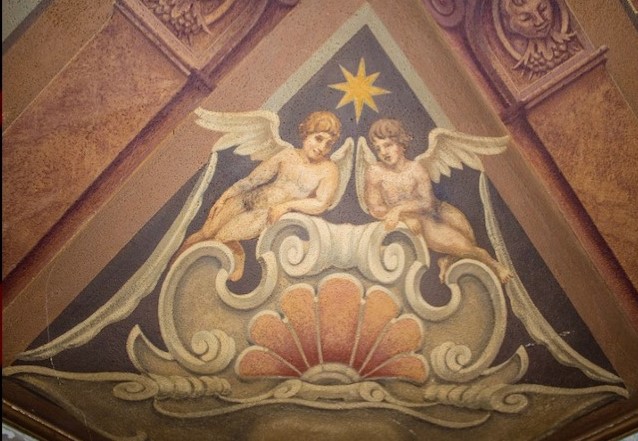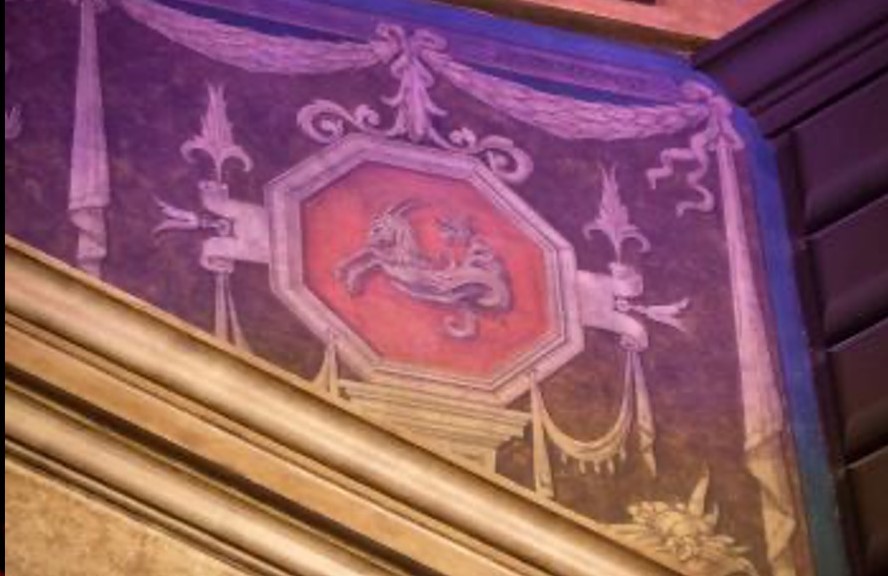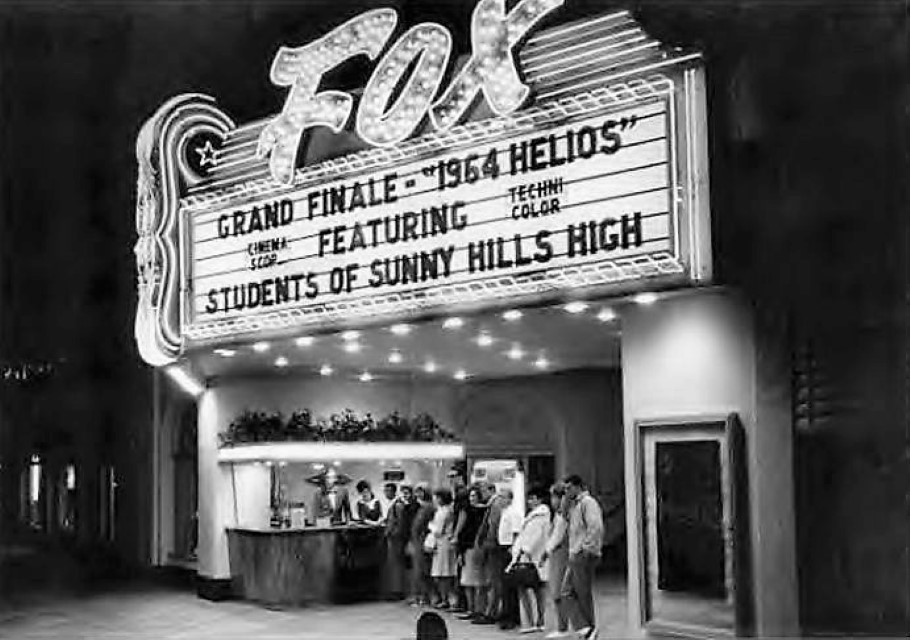About The Fox
From 1925 - 1987, the Fox Fullerton Theatre was a place for people to enjoy, escape, and smile…together.
Origin Story
In the early 1920s the mostly rural city of Fullerton began growing rapidly. Local businessman C. Stanley Chapman (son of the town’s first mayor) recognized the need for a large entertainment venue in the downtown district. On the heels of their work on Grauman’s Egyptian Theatre (1922), he hired the firm of Meyer & Holler to design and build “Chapman’s Alician Court Theatre” named for his beloved wife Alice. Opening night was on May 28, 1925, and over the course of a few years, the name would change five times to finally become known as The Fox Fullerton Theatre. The venue hosted live vaudeville performances, community events, and special concerts on stage along with screenings of Hollywood’s finest silent films. The movies were accompanied by the “Marr & Colton 3/16” pipe organ. With the debut of the movie Dick Turpin starring Tom Mix at that gala opening, The Fox Fullerton became Orange County’s first, and its largest movie palace.
On June 7, 1925, Dolla Chapman Harris (Stanley’s aunt) opened the “Mary Louise Tea Room” that was built as part of the theater complex overlooking “The Road to Spadra” (now in part, Harbor Blvd.). This was a gathering spot for ladies intent on creating “The center of the city’s social life”. With the invention of synchronized sound for movies in 1928, a “Vitaphone” sound system was installed, and with the presentation of Give and Take on February 17, 1929, Fullerton provided Orange County with its first “Talking Pictures” movie house.
In April of 1931, Orange County’s very first “Mickey Mouse Club” was formed at The Fox Fullerton. Children paid a nickel to watch cartoon matinees and enjoy organ music every Saturday. By 1932, the club membership across the United States exceeded 1,000,000 children.
Architecture
In the 1920s, the firm of Meyer & Holler made an indelible mark in the era of “The Movie Palace” when they designed Grauman’s Egyptian Theatre in Hollywood (1922), The Fox Fullerton Theatre (1925) and Grauman’s Chinese Theatre in Hollywood (1927).
The outdoor staircase design in Fullerton was modeled after the same steps at the Egyptian and at the top of those steps you find a Greek inspired theatrical mask and a large urn. Once inside the lobby, you walk under an elaborate Italian Renaissance ceiling mural, and then as you walk under the balcony, the ceiling contains repeating patterns of angels, urns, and classical Greek myths (eg., Leda and Swan) all handcrafted by artisan John Gabriel Beckman. The main lighting fixtures in the audience chamber are two large handcrafted wrought iron chandeliers along with close ceiling fixtures within repeating floral patterns. On each wall were large, beautiful murals depicting early California life as designed by legendary artisan Anthony B. Heinsbergen.
After a major remodel, the modernized Fox Fullerton Theatre reopened on May 19, 1955, with a new marquee projecting over the sidewalk, large Cinemascope screen and new stereophonic sound system.
Embracing the architectural style “Spanish Colonial Revival”, the southern addition to the theater complex opened as “The Firestone Tire & Rubber Building” built to provide automotive tire service upon its dedication on July 13, 1929.
Hollywood
The Grand Opening Gala in Fullerton took place on May 28, 1925, and the theater was dedicated by one of the biggest icons of the silent movie era, actress and producer Mary Pickford.
Over the years, The Fox Fullerton Theatre has seen a number of other Hollywood legends walk through our doors including: Douglas Fairbanks, Buster Keaton, Clara Bow, Clark Gable, Ginger Rogers, Judy Garland, Mickey Rooney, Jayne Mansfield, Telly Savalas, Janet Gaynor, Dolores Del Rio, Reginald Denny, Florence Roberts, Harold Lloyd, Laurel Goodwin, and Fullerton’s own Tommy Lasorda and Steven Peck.
Preservation
After falling into disrepair, the theater closed its doors after a 1987 screening of the Mickey Rourke/Robert DeNiro movie “Angel Heart”. Using the Historical Landmarks Ordinance, The City of Fullerton awarded the Fox Complex Landmark Status in 1990.
In the late 1990s, “Project Fox” was formed by members of the community in a grassroots effort to “Save the Fox”. The goal was to petition to have the property protected by listing it on the National Register of Historic Places and raise money to fund construction and eventual restoration. Funding came from many sources large and small. Contributors included The City of Fullerton, The State of California, a challenge grant, corporate and private donors, and the general public. Even children donated spare change towards this effort. A mysterious anonymous donor arrived at the 25th hour with a $1 million dollar gift to save the Fox from the wrecking ball.
These fundraising efforts came to fruition in November of 2004. On January 24, 2005, the Fullerton Historic Theatre Foundation closed escrow on the purchase of the venue and the Board of Directors has been the fiduciary ever since. After the purchase, many volunteers participated in numerous work parties inside the venue to help with cleanup and stabilization.
National Registry of Historic Places
Thanks to local preservation organization “Fullerton Heritage”, a multi-year campaign culminated on October 25, 2006 as The Fox Fullerton Theatre Complex was added to the National Register of Historic Places (#06000948). In total, The City of Fullerton features 23 listed buildings.
